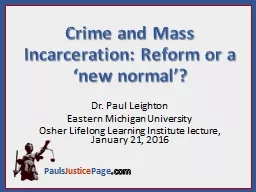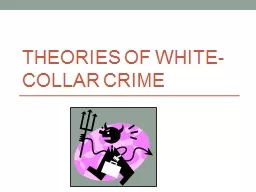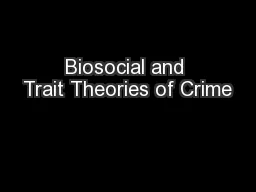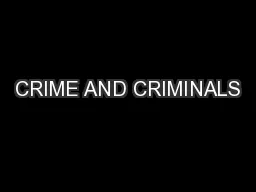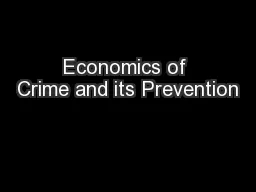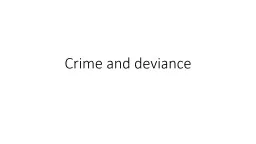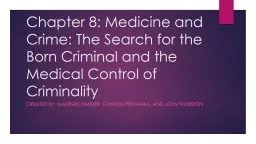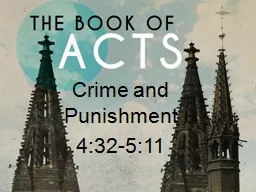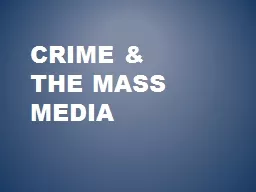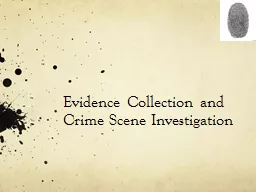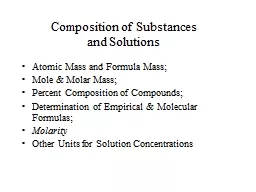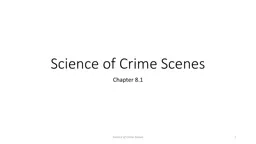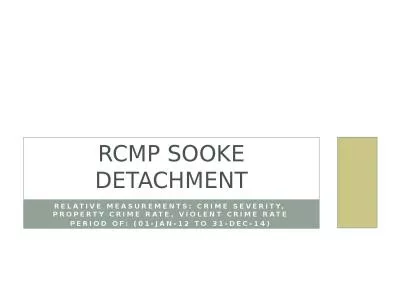PPT-Crime and Mass
Author : mitsue-stanley | Published Date : 2017-05-06
I ncarceration Reform or a new normal Dr P aul Leighton Eastern Michigan University Osher Lifelong Learning Institute lecture January 21 2016 Sentencing reform
Presentation Embed Code
Download Presentation
Download Presentation The PPT/PDF document "Crime and Mass" is the property of its rightful owner. Permission is granted to download and print the materials on this website for personal, non-commercial use only, and to display it on your personal computer provided you do not modify the materials and that you retain all copyright notices contained in the materials. By downloading content from our website, you accept the terms of this agreement.
Crime and Mass: Transcript
Download Rules Of Document
"Crime and Mass"The content belongs to its owner. You may download and print it for personal use, without modification, and keep all copyright notices. By downloading, you agree to these terms.
Related Documents

